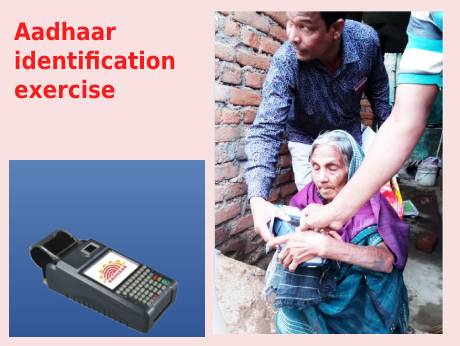
July 13 2021: The Indian government was looking for a solution to combat $3 billion per year in public aid distribution loss due to identification fraud. Now the government is utilizing biometric technology to benefit distribution across the country, saving $3 billion annually. The world’s largest biometric authentication system is using HID technology to:
-Achieve 99.9 percent identification accuracy
-Equip 80 percent of the Aadhaar Public Distribution System
-Deploy 1 million POS ID devices
Confirm millions of India’s citizens’ trusted identities within seconds each day
Visiontek is a world leader in the design and development of reliable connectivity products and solutions. Based in India, the company is currently focused on supporting government programs that address rural needs across the country.
Leveraging best-in-class fingerprint sensors from biometrics leader HID Global and working alongside long-time distribution partner Aqtronics, VISIONTEK today enjoys 80% market share throughout India when it comes to supplying point-of-sale (POS) terminals for the nation’s critical Public Distribution System. These ruggedized mobile devices bring the benefits of India’s Aadhaar programme — the world’s largest biometric identification system — to all corners of the country, even as residents retreat to remote regions during the global pandemic. Together with HID Global, VISIONTEK technology helps ensure the right government subsidy reaches the right person at the right place and time — resulting in $3 billion in annual, fraudrelated savings.
In place since 2009, India’s Aadhaar programme is based on a 12-digit number issued to citizens by the Unique Identification Authority of India (UIDAI). Individuals voluntarily enroll themselves in the program, provide minimal demographics, and submit biometric information (iris scans and fingerprints) which are then linked to their Aadhaar identification number and used as proof of ID when they collect subsidies. One of the biggest challenges faced by the country was combatting its $3 billion per year identification fraud issues around the government’s Aadhaar programmes such as its coveted Public Distribution System that issues food grains, fertilizer distributions, pension payments, banking-related disbursements, and other essential subsidies. Duplicate identity records resulted in agencies distributing social security benefits to the same people numerous times, or to those not eligible to receive payments. The use of identification cards — which were
stolen or shared to receive benefits — was another point of failure for the programme.
Another significant obstacle was finding the right technology to reach remote, rural locations where many low-income civilians reside. The program’s success was hampered by physical wireless connectivity networks as poor as the people themselves. The Indian government sought a wireless biometrics solution capable of providing reliable, consistent connectivity and a more proven method of identifying citizens — in particular, those at the outer edges of society who relied on these critical resources on a daily basis. The solution also had to perform consistently across a broad spectrum of environmental and physical conditions.
The Indian government selected Visiontek and its GL-11 Mobile POS Terminal with integrated global biometric technology to support the program and reduce fraud. Up front, it appears to be a simple process. But, behind the scenes, it’s a series of strong business relationships and stellar technology that fuel an extremely complex process to confirm true identities, reduce fraud and serve the people of India.
Citizens simply place their digit on the GL-11 terminal’s fingerprint sensor. It captures the print, transports the image across time and space, verifies it against the Aadhaar database, and then reverts confirmation to the device. All is handled with secure encryption and within 50 seconds.
The crown jewel in the GL-11 is the HID Global TouchChipTCET fingerprint reader. These sensors reliably work across a range of outdoor circumstances such as dust, sunlight, heat and moisture to accurately read fingerprints regardless of dirt, sweat, dryness, Henna, or worn down/shallow fingerprints. The compact, advanced silicon reader is built for rugged conditions and frequent use, and its modular design easily integrates into OEM products. Paired with stellar support offered by the HID Global integration team, it is an ideal component choice for citizen identification projects.
“As a team, we were dedicated to making this Aadhaar program a success and put all our resources into improving the system — from manpower and materials to re-engineering designs along the way to ensure we accurately, securely and reliably reach the people of India regardless of how remote the destination,” said C. Ramesh, CEO, Security & Identity Solutions, VISIONTEK. “We understood the importance, the impact and the value of partnerships. Together, we made it happen.”
Today, there are close to one million Visiontek GL-11 Mobile POS biometric identification terminals featuring HID Global biometric technology deployed across India. Civilians can now reliably and swiftly identify themselves from places near and far to access critical services and provisions.